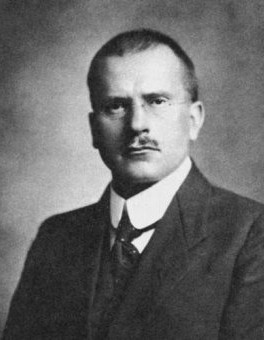Have you ever taken the Myers-Briggs Personality Indicator test? I have, more than a few times. Junior year psychology class, senior year Theory of Knowledge class, job applications, recreation–for whatever reason, I’ve taken the personality test almost more times than I can count. And although the results have varied slightly from time to time, I’ve usually been impressed with how closely my resulting type mirrors my way of interacting with the world, my inner landscape, and the people around me.
For those of you who aren’t familiar with the Myers-Briggs instrument (often referred to as MBTI), it’s a psychological test designed to measure peoples’ preferences in how they process information, make decisions, and interact with the world around them. Although the actual test is hours long, you can take an abbreviated version of the questionnaire here. Basically, the test measures responses to questions based around four basic dichotomies: Extraversion vs Introversion; Sensing vs Intuition; Thinking vs Feeling; Judging vs Perceiving. And while the test certainly doesn’t cover every aspect of personality variance, nor strength of preference, the test can still be a useful tool.
When I first took the test, I thought it was too simplistic, and possibly deterministic. But as I’ve gotten older and taken the test several more times, I believe that understanding the typing process and how the dichotomies apply to yourself and others can actually be a very valuable tool. Your type affects so many things, from the way you learn best and how you approach teaching others, to how you recharge mental energy and prefer to socialize. Knowing your own type as well as that of others in your life can help you appreciate and understand differences in relationships with friends, partners, and professional contacts. It can help you work better with others and manage your own work.
My type is ENTP: Extraverted Intuition with Introverted Thinking. According to the MBTI, this means I use my intuition to examine the world outside my self, absorbing ideas and images from the situations my life presents me with. I live in a world of possibilities; I’m creative, curious, and excited by concepts and theoretical challenges. But this type doesn’t come without its drawbacks. I’m more interested in generating possibilities and ideas than creating plans of action or making decisions. I tend to start projects…and then never finish them. I tend to overlook details, and often don’t value other peoples’ input as much as I should.
Anyone who knows me will agree that this sounds a lot like me. But having my personality type laid out in no-nonsense terms before me means that I can’t ignore the realities of how I look at the world and interact with the people around me. Knowing my type not only gives me insight into how I can leverage my strengths, but also which weaknesses I should focus on to manage my relationships with others and my professional productivity.
Because frankly, with my type it’s a miracle I ever finished this darned blog post.
Have you ever taken the MBTI? What’s your type? How has it helped you understand and appreciate yourself and others? Share your thoughts in the comment section below!


0 Comments